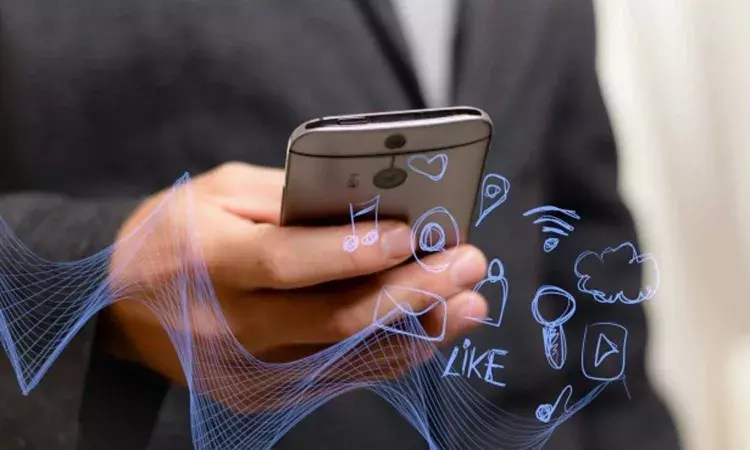- Home
- Medical news & Guidelines
- Anesthesiology
- Cardiology and CTVS
- Critical Care
- Dentistry
- Dermatology
- Diabetes and Endocrinology
- ENT
- Gastroenterology
- Medicine
- Nephrology
- Neurology
- Obstretics-Gynaecology
- Oncology
- Ophthalmology
- Orthopaedics
- Pediatrics-Neonatology
- Psychiatry
- Pulmonology
- Radiology
- Surgery
- Urology
- Laboratory Medicine
- Diet
- Nursing
- Paramedical
- Physiotherapy
- Health news
- Fact Check
- Bone Health Fact Check
- Brain Health Fact Check
- Cancer Related Fact Check
- Child Care Fact Check
- Dental and oral health fact check
- Diabetes and metabolic health fact check
- Diet and Nutrition Fact Check
- Eye and ENT Care Fact Check
- Fitness fact check
- Gut health fact check
- Heart health fact check
- Kidney health fact check
- Medical education fact check
- Men's health fact check
- Respiratory fact check
- Skin and hair care fact check
- Vaccine and Immunization fact check
- Women's health fact check
- AYUSH
- State News
- Andaman and Nicobar Islands
- Andhra Pradesh
- Arunachal Pradesh
- Assam
- Bihar
- Chandigarh
- Chattisgarh
- Dadra and Nagar Haveli
- Daman and Diu
- Delhi
- Goa
- Gujarat
- Haryana
- Himachal Pradesh
- Jammu & Kashmir
- Jharkhand
- Karnataka
- Kerala
- Ladakh
- Lakshadweep
- Madhya Pradesh
- Maharashtra
- Manipur
- Meghalaya
- Mizoram
- Nagaland
- Odisha
- Puducherry
- Punjab
- Rajasthan
- Sikkim
- Tamil Nadu
- Telangana
- Tripura
- Uttar Pradesh
- Uttrakhand
- West Bengal
- Medical Education
- Industry
New smartphone tool measures hemoglobin without drawing blood

New York- Researchers have developed a way to use smartphone images of a person's eyelids to assess blood hemoglobin levels -- a protein in red blood cells that carries oxygen.
The ability to perform one of the most common clinical lab tests without a blood draw could help reduce the need for in-person clinic visits, make it easier to monitor patients who are in critical condition, the study, published in the Optica journal said.
"Our new mobile health approach paves the way for bedside or remote testing of blood hemoglobin levels for detecting anemia, acute kidney injury and haemorrhages, or for assessing blood disorders such as sickle cell anemia." said study researcher Young Kim from Purdue University in the US.
The research team used software to transform the built-in camera of a smartphone into a hyperspectral imager that reliably measures hemoglobin levels without the need for any hardware modifications or accessories. A pilot clinical test with volunteers showed that prediction errors for the smartphone technique were within five to 10 per cent of those measured with clinical laboratory blood.
The researchers created a mobile health version of this analysis by using an approach known as spectral super-resolution spectroscopy. This technique uses software to virtually convert photos acquired with low-resolution systems such as a smartphone camera into high-resolution digital spectral signals. The research team selected the inner eyelid as a sensing site because microvasculature is easily visible there; it is easy to access and has relatively uniform redness.
The inner eyelid is also not affected by skin colour, which eliminates the need for any personal calibrations. To perform a blood hemoglobin measurement with the new technique, the patient pulls down the inner eyelid to expose the small blood vessels underneath. A healthcare professional or trained person then uses the smartphone app developed by the researchers to take pictures of the eyelids.
A spectral super-resolution algorithm is applied to extract the detailed spectral information from the camera's images and then another computational algorithm quantifies the blood haemoglobin content by detecting its unique spectral features. The mobile app includes several features designed to stabilise smartphone image quality and synchronize the smartphone flashlight to obtain consistent images. It also provides eyelid-shaped guidelines on the screen to ensure that users maintain a consistent distance between the smartphone camera and the patient's eyelid.
After undergoing tests with over 150 volunteers, the results showed that the mobile health test could provide measurements comparable to traditional blood tests. "Combining the built-in sensors available in today's smartphones with data-centric approaches can quicken the tempo of innovation and research translation in this area," Kim noted.
Medical Dialogues Bureau consists of a team of passionate medical/scientific writers, led by doctors and healthcare researchers. Our team efforts to bring you updated and timely news about the important happenings of the medical and healthcare sector. Our editorial team can be reached at editorial@medicaldialogues.in.
Dr Kamal Kant Kohli-MBBS, DTCD- a chest specialist with more than 30 years of practice and a flair for writing clinical articles, Dr Kamal Kant Kohli joined Medical Dialogues as a Chief Editor of Medical News. Besides writing articles, as an editor, he proofreads and verifies all the medical content published on Medical Dialogues including those coming from journals, studies,medical conferences,guidelines etc. Email: drkohli@medicaldialogues.in. Contact no. 011-43720751


